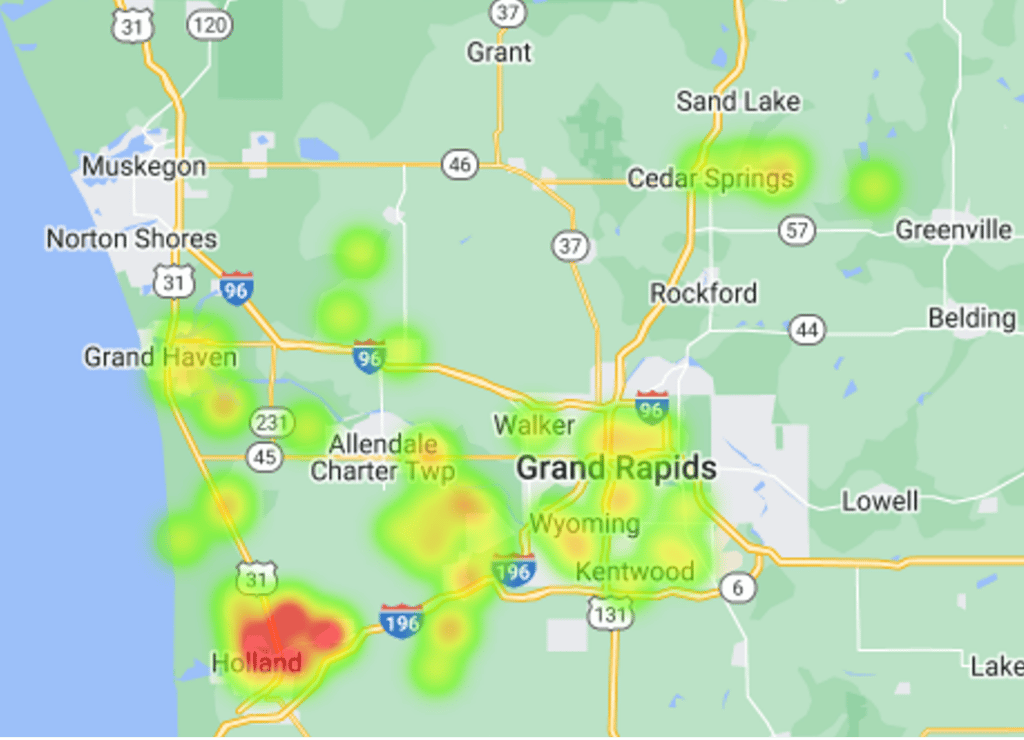
A Day in the Life at Waypoints
In a previous blog post, I discussed what registered behavior technicians (RBTs) and board certified behavior analysts (BCBAs) do and what one can expect of common role responsibilities in the field of behavior analysis. In practice, though, a typical work day can vary a lot across companies providing ABA services depending in part on the setting in which those services are provided.
At Waypoints, we almost exclusively work with clients directly in their own homes. There are exceptions, such as when technicians and clinicians accompany clients during outings into the community, but this still results in a day-to-day schedule that involves visiting varied locations for a few hours at a time. It’s a lot different from a clinic- or office-based job where you’d spend your whole 8-hour work day in one building!
Like aspects of any job, this has its potential pros and cons. Clients may feel more comfortable getting to know you in their own homes as opposed to an unfamiliar setting, but at the same time, there may be extra distractions such as pets, family members, and favorite toys. It can be nice to experience some variety in where you work, but that also comes with additional commute time.

Our Service Area
With that being said, we do take care to ensure that employees don’t experience more of a commute than they’re willing to take on! Preferred travel maximum per day is a question we ask applicants up-front during every interview, and clients are paired with technicians and clinicians based on both schedule availability and geographical location. (And, of course, expertise and compatibility!)
While there are a few exceptions – shout-out to our road warrior clinician joining us from Lansing – our clients and employees have a lot of geographical overlap.

Waypoints Clients’ Locations

Waypoints Employees’ Locations
(Not pictured: our wonderful administrative team over in the Detroit area, and me even further abroad in Evanston, Illinois. Hello from across Lake Michigan!)
Behavior Technicians
So, commute aside, what does a behavior technician’s job look like at Waypoints? One of our wonderful techs covered the format of typical sessions in a previous post, but here I will zoom out to what might be involved in a full work day.
Our technicians each work regularly with an average of two different clients, with a range between one and four. While sessions may occur at any time of day and on any day of the week, clients who are attending school predictably tend to need support during late afternoons, evenings, and weekends!
Below is an example of a typical schedule for a full-time technician, but a technician may also work as little as 8 hours per week with a single client. We’re able to accommodate many different schedules and preferred workloads.

Working one-on-one with clients can sometimes make for an unpredictable schedule, though! Clients and technicians alike may get sick, go on vacation, or need to cancel a session for any number of other different reasons. In these cases, technicians can use session time to complete professional development trainings, assist other technicians with their clients, or create materials to use during future sessions. Even if backup work is not available, technicians are paid at a cancellation rate for all sessions cancelled by clients, since we know that a consistent and reliable paycheck is very important.
Clinicians
If you’ve worked as a clinician in the past, you already know that summarizing a clinician’s typical schedule isn’t quite so easy! While technicians are responsible for direct service delivery, clinicians conduct assessments, develop skill-building and behavior-reduction programs, create program materials, supervise technicians, monitor and analyze data, communicate with clients and their caregivers… the list goes on.
Our full-time clinicians work with an average of 14 clients each, and as you might expect, part-time clinicians work with about 7. Clinicians create their own schedules, and work at times that are best for them; hours worked can vary quite a bit from day to day and week to week.
Currently, and especially since many accommodations have been made in the wake of COVID-19, a good portion of a clinician’s job responsibilities at Waypoints can be completed remotely. Supervising sessions via video call is often both less intrusive for the client, and more convenient for everyone involved! However, clinicians at Waypoints don’t interact with clients purely via telehealth. Most assessments yield much more helpful results when a clinician is able to get to know a client in their own home, and regular in-person contact with clients and caregivers can help with relationship-building.
For that matter, explaining to new technicians how to work with new clients is often best accomplished in person as well, depending on all parties’ preferred teaching and learning styles! Clinicians and technicians often meet up with each other at cafes or libraries, and for larger trainings and get-togethers we might book a conference room. All in all, a clinician’s role at Waypoints offers a lot of flexibility when it comes to both travel and timing, but shouldn’t be thought of as a purely remote position.
Collaboration and Community
With so much variability in schedules and without a central location where we can see each other every day, how do we maintain good communication and come together as a company? Thankfully, so far that hasn’t been a big struggle at Waypoints! Behavior technician jobs and clinicians’ workloads already require so much time on computers and tablets responding to emails, using our clinical management software, and typing up reports – we’ve found our “water cooler” together online.

Using a platform called Discord, we share recipes and pet pictures, give each other shout-outs, ask for help with session coverage, advertise upcoming professional development opportunities… and share our daily Wordle scores! While “hanging out” online is by no means required (I’m personally no fan of obligatory workplace socializing), this allows us to have that personal connection.
Technicians and clinicians also each decide amongst themselves how they prefer to communicate with each other. Whether you’re most comfortable with texting, calling, emailing, or video chatting, we almost always speak with each other in some way every day.
Want to Join Us?
If the workday as a technician or clinician sounds appealing to you, I encourage you to check out our previous blog post discussing how to become an ABA practitioner! You can also learn more about careers here at Waypoints at https://waypoints.life/careers/.
Related Articles

Building Meaningful Careers: Exploring Opportunities at Waypoints
Building Meaningful Careers: Exploring Opportunities at Waypoints One of our guiding principles at Waypoints is that the best client outcomes

Building Skills Through Positive Reinforcement
As I’ve written previously, ABA services can be especially helpful for learners who struggle in traditional academic settings. Many people

Optimizing the Learning Environment: How ABA Skill Building Can Benefit Autistic Children
Skill-building based on the principles of Applied Behavior Analysis (ABA) has the power to unlock any learner’s potential, and it
Get in Touch With Waypoints
Whether you’re looking for diagnostic testing, one-on-one in-home ABA therapy and skill-building resources, or simply want to learn more about our unique approach, please don’t hesitate to reach out! (We love getting mail.)

